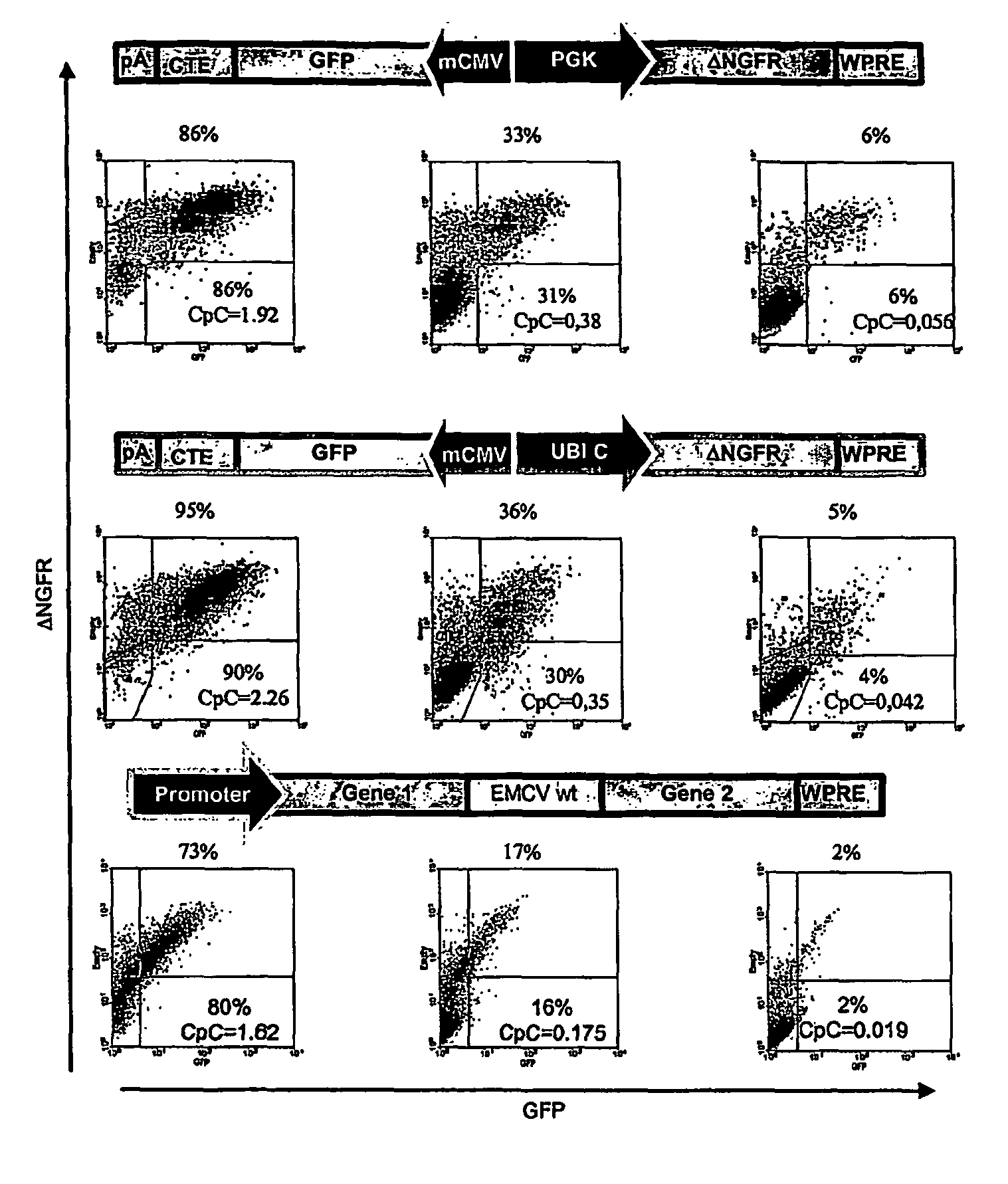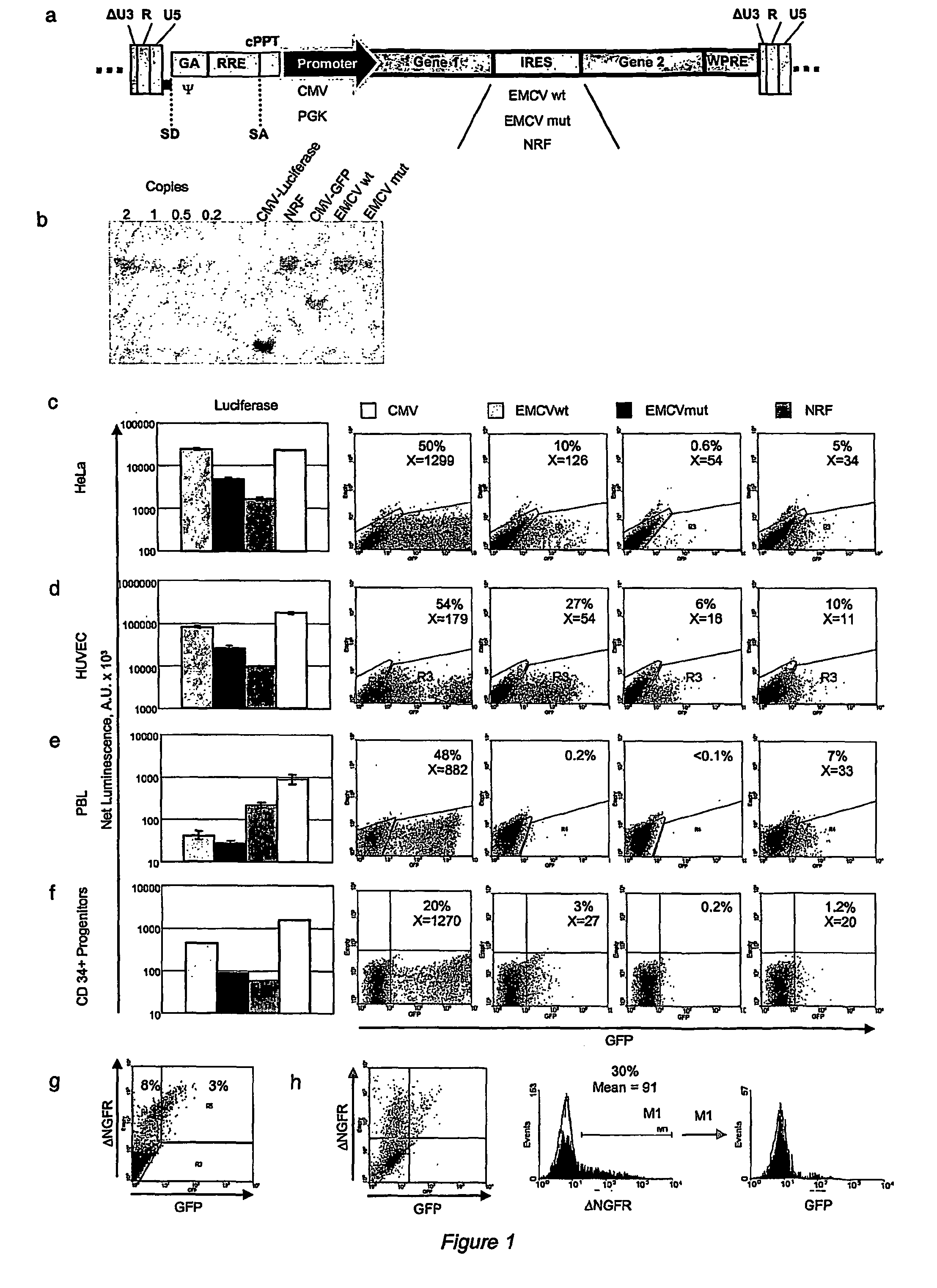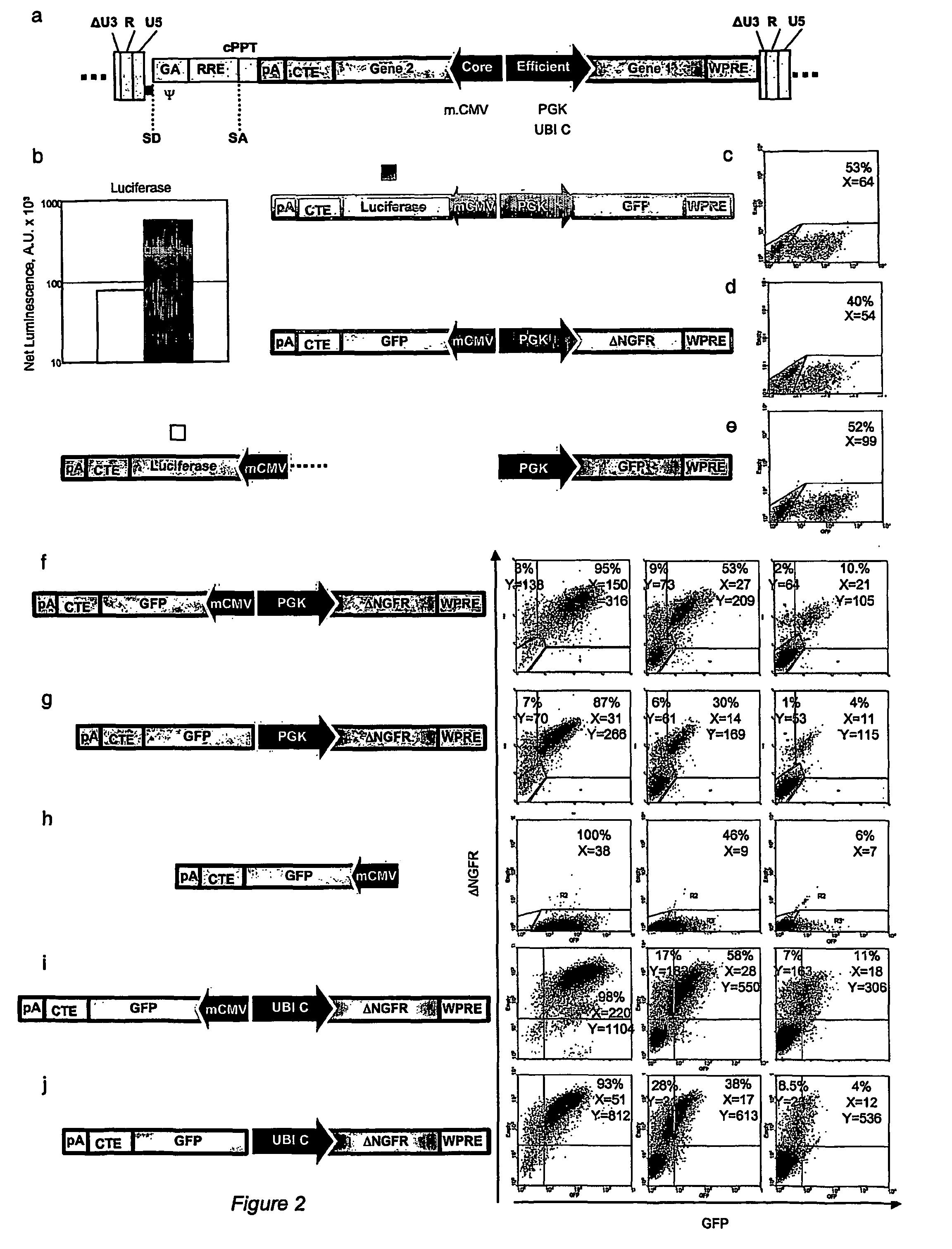Lentiviral vectors carrying synthetic bi-directional promoters and uses thereof
a technology of promoters and lentiviral vectors, applied in the direction of biocide, plant growth regulators, biochemistry apparatus and processes, etc., can solve the problems of preventing reliable studies and/or efficacious applications, proving difficult to adapt to viral delivery of multiple transgenes, and limiting the application of this technology to multiple gene transfer
- Summary
- Abstract
- Description
- Claims
- Application Information
AI Technical Summary
Benefits of technology
Problems solved by technology
Method used
Image
Examples
example 1
Materials and Methods
Plasmid Construction
[0045]All transfer vectors were built from plasmid pCCL.sin.cPPT.PGK.GFP.WPRE15 using the following previously described sequence elements: EMCV IRES's with the downstream gene coding sequence starting at the 11th ATG of the IRES (wt) or with the 11th ATG of IRES mutated to create a Hindi cloning site and allow translation initiation at the downstream transgene ATG16(EMCVmut), the NRF IRES18, the MPMV CTE21, a minimal CMV core promoters20, a 1226 bp fragment from the Ubiquitin-C promoter19.
Construction of Lentiviral Vector with Bi-directional Promoters
[0046]To generate the lentiviral construct RRL-MA1, an XhoI-XhoI fragment containing the SV40polyA.CTE.Luciferase.minhCMV elements (derived from the lentiviral construct pRRL.sin.cPPT.SV40polyA.CTE.Luciferase.minhCMV.TetO7.minMMTV.eGFP) was cloned into the lentiviral vector construct pRRL.sin.cPPT.hPGK.eGFP.Wpre (Follenzi et al., 2000) cut with the same enzyme to obtain RRL-MA1-lucif / GFP (pRRL.s...
PUM
| Property | Measurement | Unit |
|---|---|---|
| density | aaaaa | aaaaa |
| temperature | aaaaa | aaaaa |
| thick | aaaaa | aaaaa |
Abstract
Description
Claims
Application Information
 Login to view more
Login to view more - R&D Engineer
- R&D Manager
- IP Professional
- Industry Leading Data Capabilities
- Powerful AI technology
- Patent DNA Extraction
Browse by: Latest US Patents, China's latest patents, Technical Efficacy Thesaurus, Application Domain, Technology Topic.
© 2024 PatSnap. All rights reserved.Legal|Privacy policy|Modern Slavery Act Transparency Statement|Sitemap



